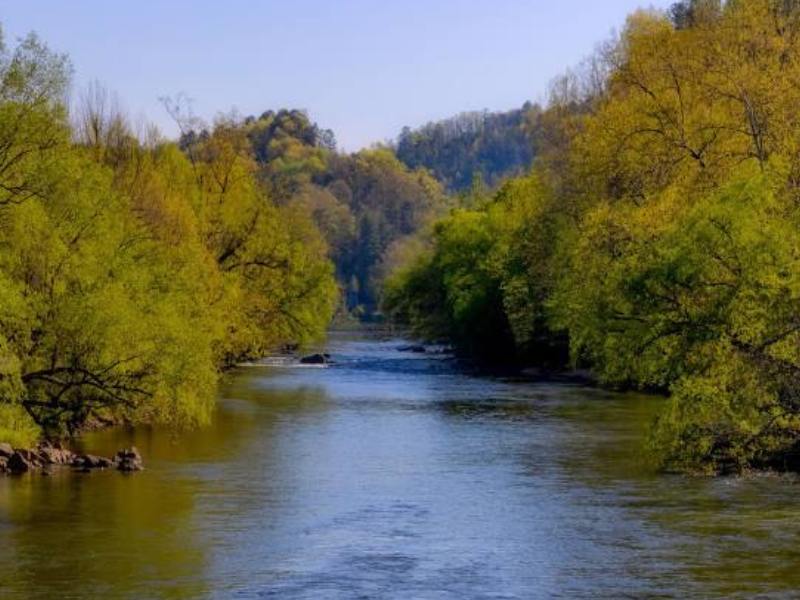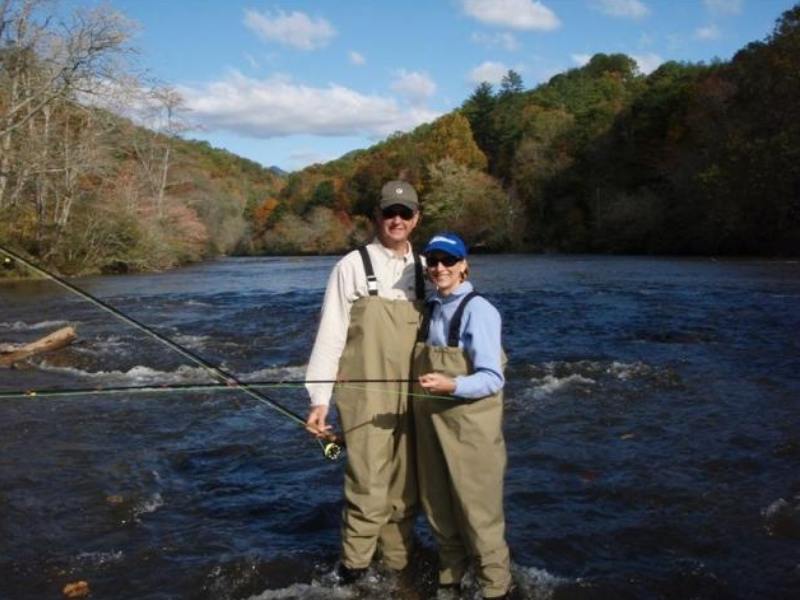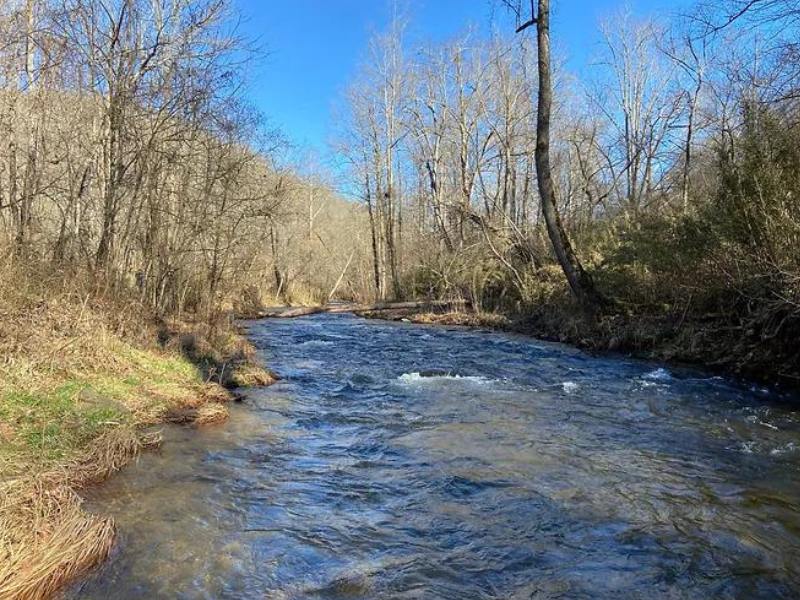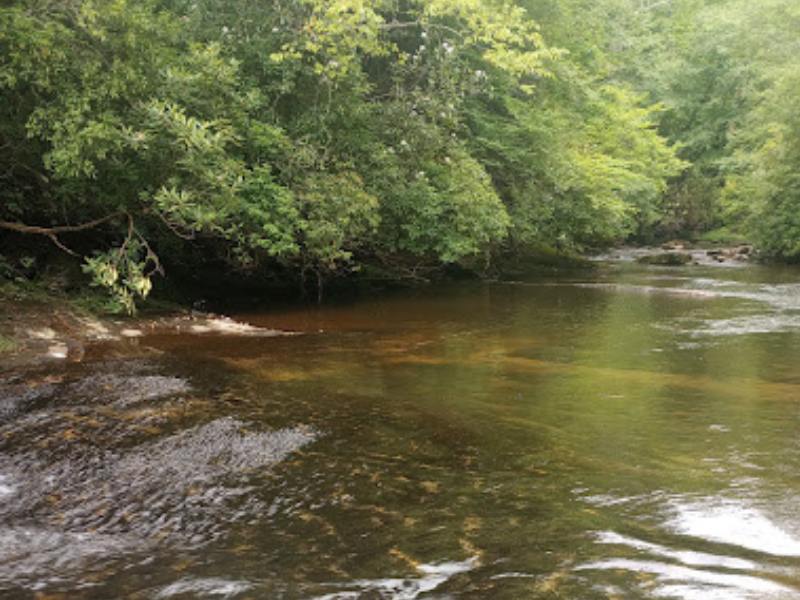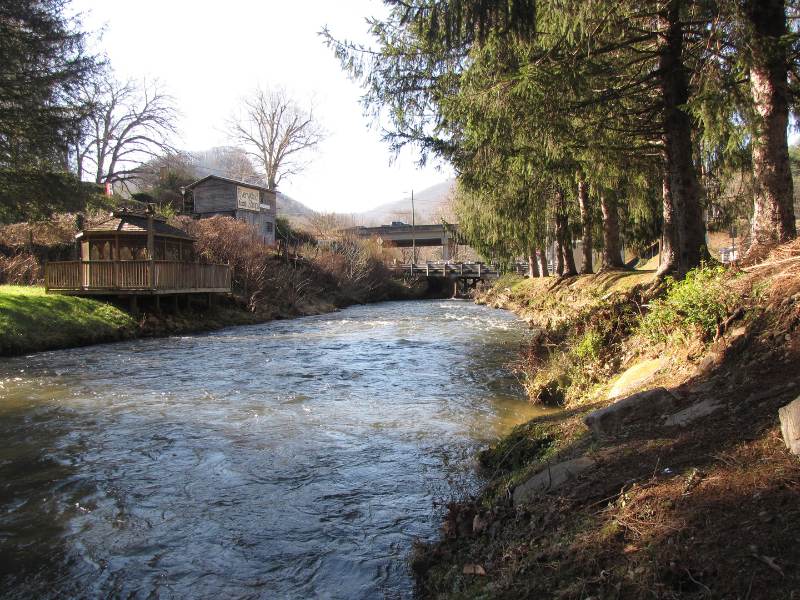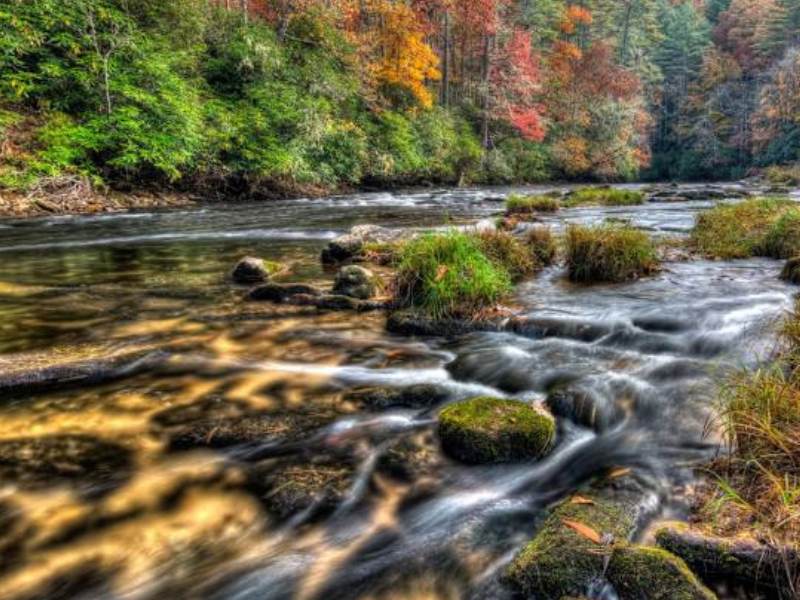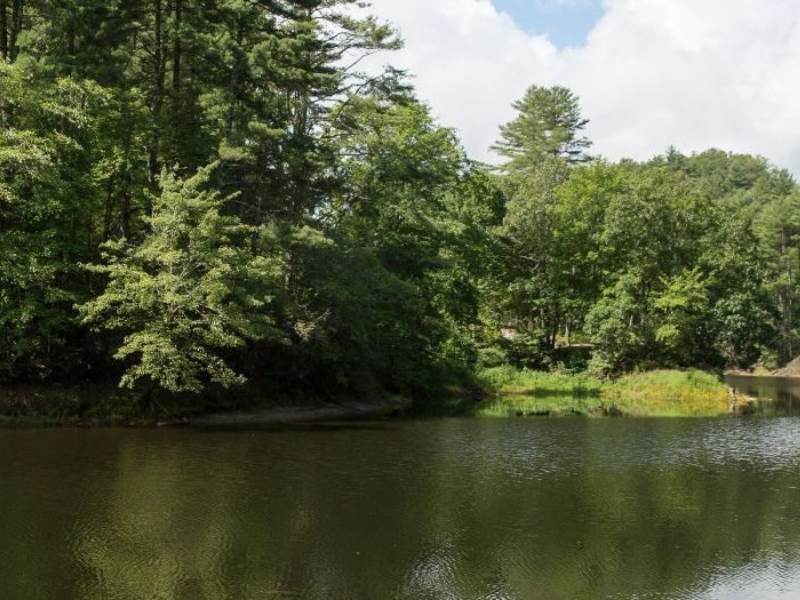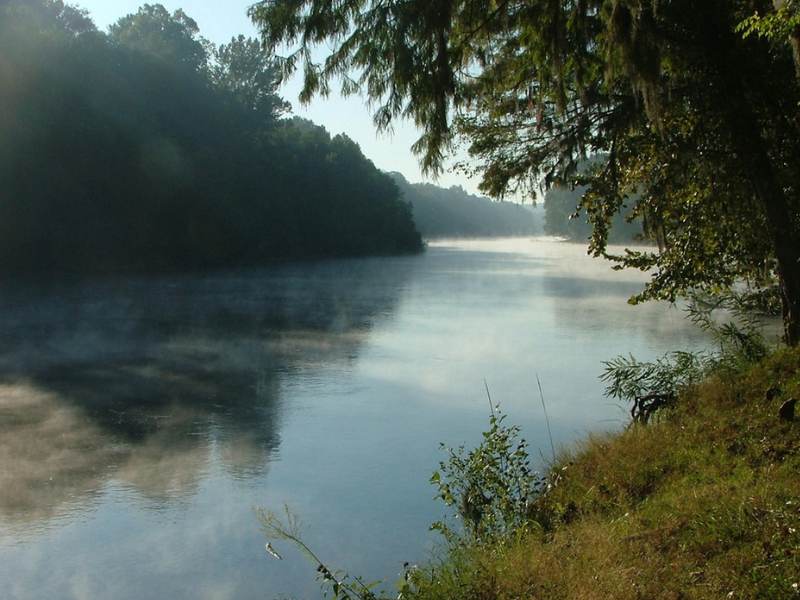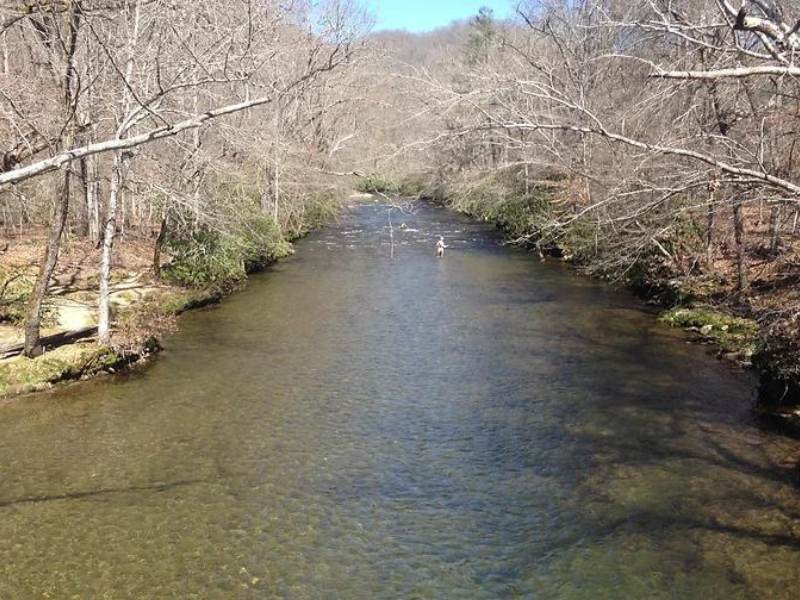9 Best Trout Streams Near Cashiers-Highlands, NC
If there’s such a thing as a trout fisherman’s paradise, it probably looks quite a bit like the mountains of western North Carolina. Crisscrossed by hundreds of miles of rivers and streams, it’s a place where world-class trout fishing and stunning scenery combine to create something truly special.
Some of the best trout water in North Carolina flows through Jackson County, much of it just minutes from Cashiers and Highlands. These streams are your best bets for catching brook trout, brown trout and rainbow trout in our neck of the woods.
Tuckasegee River
Easily one of the top trout rivers in North Carolina, “The Tuck,” as it’s often called, flows northwest across almost the entirety of Jackson County. The fishing is excellent, and the river is divided into sections that are managed under various classifications with different regulations. The 5-mile Delayed Harvest section between the small towns of Dillsboro and Sylvia is especially popular, and the state stocks close to 50,000 brook, brown and rainbow trout in this section every year from March through may and October through November. The Tuckasegee River is easily accessible, and the only downside is that it can get crowded at times.
Panthertown Creek
Some would call Panthertown Creek a hidden gem, but local fishing guides and anglers in the know will tell you that it’s one of the best places around to find wild native Southern Appalachian brook trout in a pristine setting. Brookies occasionally reach 12 inches here, though fish in the 8 to 10-inch range are more common. The scenery is also phenomenal; the creek flows through the rugged Panthertown Valley, which has been dubbed the “Yosemite of the East.” Fishing on Panthertown Creek is strictly catch and release with single-hook artificial lures only. It’s also a stream that requires a 2-mile hike to reach the water, which tends to keep all but the most dedicated anglers away.
Panthertown Creek
Location: Jackson County between Lake Toxaway and Cashiers
Length: 20 m
Caney Fork
A tributary that flows into the Tuckasegee River near East Laport, the Caney Fork is a midsized stream known as an excellent paddling spot. The trout fishing is excellent as well, with a healthy mix of wild brown trout and rainbow trout. Caney Fork Road runs alongside the stream and provides access to a lot of productive pools and riffles. A decent portion of the land alongside the Caney Fork is privately owned, so use caution to avoid trespassing.
Caney Fork
Location: Cullowhee, Jackson County, Tuckasegee, NC 28783
Whitewater River
Flowing southward from Jackson County into South Carolina, the Whitewater River is best known for its twin waterfalls—Upper Whitewater Falls and Lower Whitewater Falls—which lie on either side of the state line. The river also supports an abundant population of wild brown and rainbow trout. A few brook trout are also found near the headwaters. There’s access at the NC 281 bridge, which crosses the river just above Upper Whitewater Falls. Angler foot traffic has created trails alongside the river, making it easy to work your way upstream and fish each pool.
Whitewater River
Length: 14.6-mile-long (23.5 km)
Scott Creek
Perhaps not as well known as some of the other waters in the Cashiers area, Scott Creek is an excellent hatchery-supported stream that is stocked every year from March through July with all three species of trout. There’s great fishing from the headwaters all the way down to where Scott Creek empties into the Tuckasegee River, a distance of about 12 miles. Unlike many other streams in the area, there are no lure restrictions and harvesting trout is allowed, making it a great option if you want to catch a few fish for the table.
Scott Creek
Located: Dillsboro, North Carolina in Jackson County
Chattooga River
The Chattooga River starts in western North Carolina and crosses the state line into South Carolina just 10 miles from its headwaters. The South Carolina selection is much longer and more well-known, but those first 10 miles also offer some truly excellent trout fishing. This section is home to a thriving population of wild brown trout, with fish averaging about 14 inches and occasionally reaching 20 inches or more. There’s excellent access to the Chattooga River along Bull Pen Road, just off NC 107 south of Cashiers. Natural baits (excluding live fish) are permitted here, making it an excellent option for non-fly anglers.
Chattooga River
Located: Georgia, North Carolina, South Carolina
Length: 92 km
Tanasee Creek
One of the small streams that forms the headwaters of the Tuckasegee River, Tanasee Creek supports a healthy population of wild brown trout. The creek is just over 2 miles in length, and it flows through some particularly picturesque woodlands. The wild brown trout in Tanasee Creek are known to get very large, and even if you don’t catch as many as you would in some of the other nearby streams, you have a good shot at landing a trophy. Bridge crossings on Canada Road and Tanasee Creek Road provide access.
Tanasee Creek
Located: Jackson County, North Carolina
Length: 40 acres
Savannah Creek
Savannah Creek is another tributary of the Tuckasegee River, and one that offers some of the easiest trout fishing in the area during the spring season. That being said, the creek is known more for numbers than for size. This hatchery-supported stream is stocked from March through May in a 9-mile section between Shell Branch and Cagle Branch, and there are no lure or bait restrictions. Multiple pull-offs along U.S. 23/441 provide access to Savannah Creek, and the state stocks brook, brown and rainbow trout most years.
Savannah Creek
Located: Savannah, North Carolina 28779, USA
Raven Fork
The Raven Fork is an outstanding trout stream that is frequently ranked among the best in North Carolina. Its headwaters lie within Great Smoky Mountains National Park, and not many people fish the upper section because reaching it typically requires an overnight backpacking trip. But the Raven Fork is more accessible farther downstream, where it flows through the Cherokee Indian Reservation. A 2.2-mile section of the Raven Fork within the reservation, referred to as the Cherokee Trophy Water, harbors some of the largest trout anywhere in North Carolina, including rainbows over 20 inches and browns that sometimes surpass 30 inches. An additional Cherokee annual permit and daily permit are required to fish on the reservation, but it’s well worth the extra effort.
Raven Fork
Located: Cherokee, North Carolina, USA
Length: 5 miles
Contact us today to learn more about all the adventures that await in the Cashiers-Highlands area. Most of the trout streams that are listed here—and many that aren’t—are part of the Western North Carolina Fly Fishing Trail, which provides some of the best trout fishing anywhere in America.


